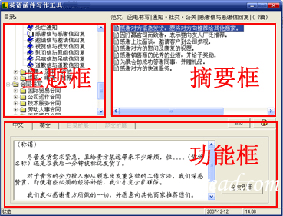英文法律词典 B-34
|
BOTELESS, or bootless. Without recompense, reward or satisfaction made unprofitable or without success. BOTTOMRY, maritime law. A contract, in nature of a mortgage of a ship, on which the owner borrows money to enable him to fit out the ship, or to purchase a cargo, for a voyage proposed: and he pledges the keel or bottom of the ship, pars pro toto, as a security for the repayment; and it is stipulated that if the ship should be lost in the course of the voyage, by any of the perils enumerated in the contract, the lender also shall lose his money but if the ship should arrive in safety, then he shall receive back his principal, and also the interest agreed upon, which is generally called marine interest, however this may exceed the legal rate of interest. Not only the ship and tackle, if they arrive safe, but also the person of the borrower, is liable for the money lent and the marine interest. See 2 Bl. Com. 458; Marsh. Ins. B. 21 c. 1; Ord. Louis XIV. B. 3, tit. 5; Laws of Wishuy, art. 45 Code de Com. B. 2, tit. 9. 2. The contract of bottomry should specify the principal lent, and the rate of marine interest agreed upon; the subject on which the loan is effected the names of the vessel and of the master those of the lender and borrower whether the loan be for an entire voyage; for what voyage and for what space of time; and the period of re-payment. Code de Com. art. 311 Marsh. Ins. B. 2. 3. Bottomry differs materially from a simple loan. In a loan, the money is at the risk of the borrower, and must be paid at all events. But in bottomry, the money is at the risk of the lender during the voyage. Upon a loan, only legal interest can be received; but upon bottomry, any interest may be legally reserved which the parties agree upon. See, generally, Metc. & Perk. Dig. h. t.; Marsh. lnst. B. 2; Bac. Abr. Merchant, K; Com. Dig. Merchant. E 4; 3 Mass. 443; 8 Mass. 340; 4 Binn. 244; 4 Cranch, 328; 3 John. R. 352 2 Johns. Cas. 250; 1 Binn. 405; 8 Cranch, 41 8; 1 Wheat. 96; 2 Dall. 194. See also this Dict. tit. Respondentia; Vin. Abr. Bottomry Bonds 1 Bouv. Inst. n. 1246-57. BOUGHT NOTE, contracts. An instrument in writing, given by a broker to the seller of merchandise, in which it is stated that the goods therein mentioned have been sold for him. There appears, however, some confusion in the books, on the subject of these notes sometimes they are called sold notes. 2 B. & Ald. 144 Blackb. on Sales, 89. 2. This note is signed in the broker's name, as agent of the buyer and seller; and, if he has not exceeded his authority, the parties are thereby respectively bound. 1 Bell's Com. (5th ed.) 435; Holt's C. 170; Story on Agency, §28; 9 B. & Cr. 78; 17 E. C. L. R. 335; 5 B. & Ad. 521; 1 N. R. 252; 1 Moo. & R. 368; Moo. & M. 43; 22 E. C. L. R. 243; 2 M. & W. 440; Moo. & M. 43; 6 A. & E. 486; 33 E. C. L. R. 122; 16 East, 62 Gow, R. 74; 1 Camp. R. 385; 4 Taunt. 209; 7 Ves. 265. Vide Sold Note. BOUND BAILIFFS. Sheriff's officers, who serve writs and make arrests; they are so called because they are bound to the sheriff for the due execution of their office. 1 Bl. Com. 345. BOUNDARY, estates. By this term is understood in general, every separation, natural or artificial, which marks the confines or line of division of two contiguous estates. 3 Toull. n. 171. 2. Boundary also signifies stones or other materials inserted in the earth on the confines of two estates. 3. Boundaries are either natural or artificial. A river or other stream is a natural boundary, and in that case the centre of the stream is the line. 20 John. R. 91; 12 John. R. 252; 1 Rand. R. 417; 1 Halst. R. 1; 2 N. H. Rep. 369; 6 Cowen, R. 579; 4 Pick. 268; 3 Randolph's R. 33 4 Mason's R. 349-397. 4. An artificial boundary is one made by man. 5. The description of land, in a deed, by specific boundaries, is conclusive as to the quantity; and if the quantity be expressed as a part of the description, it will be inoperative, and it is immaterial whether the quantity contained within the specific boundaries, be greater or less than that expressed; 5 Mass. 357; 1 Caines' R. 493; 2 John. R. 27; 15 John. 471; 17 John. R. 146; Id. 29; 6 Cranch, 237; 4 Hen. & Munf. 125; 2 Bay, R. 515; and the same rule is applicable, although neither the courses and distances, nor the estimated contents, correspond with such specific boundaries; 6 Mass. 131; 11 Mass. 193; 2 Mass. 380; 5 Mass. 497; but these rules do not apply in cases where adherence to them would be plainly absurd. 17 Mass. 207. Vide 17 S. & R. 104; 2 Mer. R. 507; 1 Swanst. 9; 4 Ves. 180; 1 Stark. Ev. 169; 1 Phil. Ev. Index, h. t.; Chit. Pr. Index, h. t.; 1 Supp. to Ves. jr. 276; 2 Hill. Ab. c. 24, §209, and Index, h. t. 6. When a boundary, fixed and by mutual consent, has been permitted to stand for twenty-one years, it cannot afterwards be disturbed. In accordance with this rule, it has been decided, that where town lots have been occupied up to a line fence between them, for more than twenty-one years, each party gained an incontrovertible right to the line thus established, and this whether either party knew of the adverse claim or not; and whether either party has more or less ground than was originally in the lot he owns. 9 Watts, R. 565. See Hov. Fr. c. 8, p. 239 to 243; 3 Sum. R 170 Poth. Contr. de Societe, prem. app. n. 231. 7. Boundaries are frequently marked by partition fences, ditches, hedges, trees, &c. When such a fence is built by one of the owners of the land, on his own premises, it belongs to him exclusively; when built by both at joint expense, each is the owner of that part on his own land. 5 Taunt. 20. When the boundary is a hedge and a single ditch, it is presumed to belong to him on whose side the hedge is, because he who dug the ditch is presumed to have thrown the earth upon his own land, which was alone lawful to do, and that the hedge was planted, as is usual, on the top of the bank thus raised. 3 Taunt. 138. But if there is a ditch on each side of the hedge, or no ditch at all, the hedge is presumed to be the common property of both proprietors. Arch. N. P. 328; 2 Greenl. Ev. §617. A tree growing in the boundary line is the joint property of both owners of the land. 12 N. H. Rep. 454. 8. Disputes arising from a confusion of boundaries may be generally settled by an action at law. But courts of equity will entertain a bill for the settlement of boundaries, when the rights of one of the parties may be established upon equitable grounds. 4 Bouv. Inst. n. 3923. |








